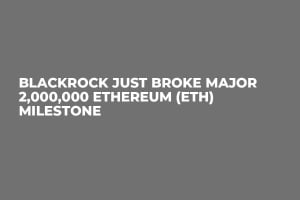
Disclaimer: The opinions expressed by our writers are their own and do not represent the views of U.Today. The financial and market information provided on U.Today is intended for informational purposes only. U.Today is not liable for any financial losses incurred while trading cryptocurrencies. Conduct your own research by contacting financial experts before making any investment decisions. We believe that all content is accurate as of the date of publication, but certain offers mentioned may no longer be available.
Vitalik Buterin, the founder of Ethereum (ETH), has shared his insights into how blockchain projects, particularly layer-2 solutions, can be built to achieve success. In a post on X, Buterin noted that "The best way to build an L2 is to lean into the L1's offerings."
Celo’s transition highlights Ethereum’s efficiency
Notably, the Ethereum founder is saying that the most effective way to build a layer-2 blockchain is to rely on layer-1 offerings. These include the security, data, censorship resistance and proofs provided by the base layer.
This is critical, as it allows layer 2s to focus on sequencing, which involves ordering transactions and verifying their validity. For instance, on Ethereum, this happens via zero-knowledge proofs or fraud proofs.
Buterin argues that this model achieves efficiency and faster performance. It also eliminates the need for users to build trust in new validators. He highlighted that if a layer 2 (L2) fails, users are confident that the layer 1 (L1), in this case, Ethereum, can act as a safety net.
Interestingly, this is already being achieved with Celo, a layer 2 secured by Ethereum. Celo was originally a layer-1 blockchain, but since its transition, it has significantly reduced block times from five seconds to one second and halved inflation.
Ethereum as scalable base layer of future
Vitalik Buterin suggests that, in the future, many layer 1s may follow this blueprint and transition to becoming layer 2s on Ethereum. He maintains this is the blockchain vision that many thought impossible in the early days. The aim is to ensure scalability, sustainability and ease of access for developers.
Following Celo’s transition, it has gained traction and recognition from industry players. As U.Today reported, Celo flipped Tron in the number of daily active addresses, highlighting its growth.
The latest insight from Buterin does not negate his earlier stance on the four essential characteristics of sustainable and scalable L1 blockchains.


 Arman Shirinyan
Arman Shirinyan Alex Dovbnya
Alex Dovbnya Caroline Amosun
Caroline Amosun Godfrey Benjamin
Godfrey Benjamin